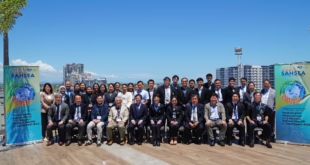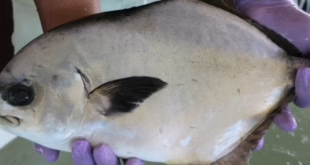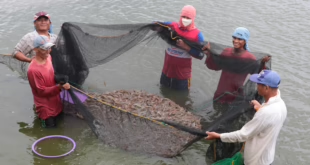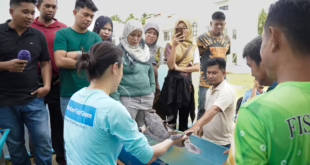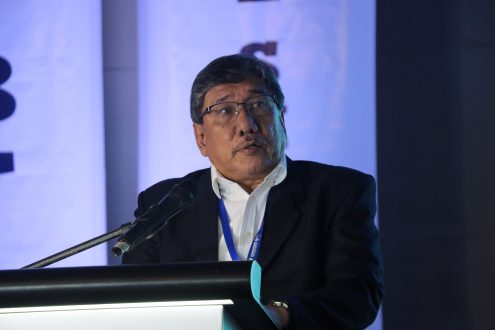
By RD Dianala
BACOLOD CITY – With its premium flavor and superior economic value, tiger shrimp is being pushed as an alternative species to farm alongside the popular whiteleg shrimp or vannamei.
Locally known as lukon or sugpo, the tiger shrimp’s potentials were underlined by Dan Baliao, chief of the Aquaculture Department of the Southeast Asian Fisheries Development Center (SEAFDEC/AQD) during the 12th Philippine Shrimp Congress.
“Tiger shrimp has good attributes of its own like better taste and better price compared to vannamei,” said Baliao during the opening of the congress on Nov. 20, 2019.
Baliao said shrimp farming in the Philippines was a multi-million-dollar industry in the 90s with the country ranking among the top 10 shrimp-producing countries in the world with a production of about 40,000 tons per year.
“However, the industry was ill-prepared for intensification. There were no guidelines to support the rapid expansion of the shrimp industry,” he added.
The use of unapproved chemicals and release of untreated wastewater into the environment was rampant then, triggering a series of different diseases that plague the industry until now.
Environment-friendly schemes
“We have learned our lessons. Even before the year 2000, we have started to advocate environment-friendly shrimp aquaculture of tiger shrimp,” said Baliao.
“We encourage the farming of other shrimp species, especially tiger shrimp in polyculture with finfish species to cater to farmers who prefer to farm extensively, or in monoculture using the semi-intensive method.”
The SEAFDEC/AQD culture method uses green water technology that stabilizes water quality and naturally suppresses the harmful luminous and other Vibrio bacteria that cause massive mortality in shrimp. This is achieved by stocking tilapia and milkfish in the same water where shrimp are grown.
Last month, SEAFDEC/AQD demonstrated the success of the technology when they harvested 2,800 kilograms of 30-gram tiger shrimp from a half-hectare pond after 113 days of culture.
“Mucus secretions of tilapia and milkfish cultured in the corners and center of the pond create green water that suppresses luminous bacteria count,” he said.
The fish are contained inside sludge collectors at the center and corners of the pond which serve to collect waste that otherwise deteriorate the quality of the water.
Meanwhile, water discharged from shrimp ponds are first treated by a series of baffles (that help settle suspended particles) and bioremediators such as seaweed and the filter-feeding oysters and mussels.
“These methods are socially equitable and more environmentally sound which improves the sustainability of shrimp farming,” added Baliao.
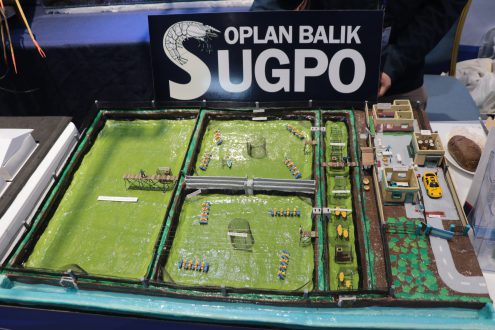
Improved pond management
The SEAFDEC/AQD chief also stressed the importance of proper pond management and the observation of proper biosecurity to keep out the pathogens that can potentially wipe out entire ponds.
“Strict implementation of proper hygiene and sanitation in the pond facility reduces the risk of introducing shrimp pathogens.”
Foot baths for personnel and tire baths for vehicles must be installed at every entrance while crab fences around shrimp ponds and bird scare devices keep out crabs and birds that have been found to be carriers of diseases.
Water and shrimp samples are also religiously monitored for physico-chemical parameters and pathogens from stocking of the larvae until harvest.
 SEAFDEC/AQD Southeast Asian Fisheries Development Center | Aquaculture Department
SEAFDEC/AQD Southeast Asian Fisheries Development Center | Aquaculture Department
